Bad Luck Plants in Feng Shui [List of Unlucky Plants!]
Feng shui is all about creating an environment in your home that contains supportive energy for your life.
That means you shouldn’t have things in your home that you don’t love, that bring down the energy, or that cause bad vibes.
While most feng shui experts agree that having plants in your home can uplift and cleanse the energy – what about bad luck plants?
Are there bad luck plants in feng shui?
Is it possible to have plants that cause bad luck?
The truth is that EVERYTHING in feng shui depends on how YOU feel about it.
If you have negative thoughts or feelings about an object in your home, then that is the energy that object carries for you.
And that includes plants!
If you feel like a plant is dangerous or has low vibrations, then that plant can bring you bad luck.
Think about the energy in your home like a bank account.
Some things in your home add to your bank account, adding positive energy.
Other things add negative energy, subtracting from your bank account.
If you want to have a surplus of good vibes in your home, you want more positive energy items to be there.
If you are surrounded by things in your home that make you feel good, then your home will feel good!
So while YOUR energy is the most important thing when it comes to bad luck plants in feng shui, it is still true that certain plants have negative energy attached to them.
Let’s go through the most common bad luck feng shui plants.
List of Bad Luck Plants in Feng Shui:
- spiky plants / plants with thorns
- dead or dying plants
- fake plants
- cotton plants
- tamarind (mehendi) and myrtle trees
- babul tree
- crown of thorns (euphorbia milii)
Plants with Thorns or Spikes
Thorns and spikes are called “poison arrows” in feng shui.
They have dangerous energy that points at you, piercing your energy, which drains the good Chi (life force energy.)
The most common houseplants with thorns or spines are cactus plants.
It’s fine to have a few cactus plants in your home, but if you have a home full of them, it’s generally better to keep most of them in your home’s fame and reputation area.
This is the only area of your home that’s ruled by the fire element (the element associated with cactus plants.)
Keeping one or two cactus plants in different areas will be fine, because fire is an important element.
But again, think about it as a bank account — too much fire energy can burn through the energy quickly!
If you LOVE cactus plants, don’t worry!
See this post for more info: cactus and feng shui, and also this post: the feng shui fire element.
Dead or Dying Plants
If you love plants, you’ve probably had a few plant hospitals in your home from time to time!
While it can be okay to have a few plants that you are nursing back to health, sometimes it is better for your home’s energy to replace the dying plants or remove them altogether.
Dead or dying plants carry sad, stale, and stagnant energy.
After all, they are no longer growing and replenishing the energy in your home.
In some cultures, it’s said that dead or dying plants have actually absorbed negative energy in your home, and that’s why they are no longer thriving!
Instead of keeping them, thank the plant for protecting your home and add it to the compost pile or throw it out.
Another way to think about dead or dying plants is – where can you put them in your home where you don’t mind having a little bit of bad luck?
See?
It’s much better to accept the life cycle of the plant and replace it than to let the negative energy accumulate!
Fake Plants
While fake plants aren’t always bad luck feng shui plants, they can get dusty and dirty.
This means they can hold stale, stagnant Chi.
If you have a lot of fake plants in your home, make sure that you clean and dust them often!
And replace them with new ones if they are faded or not in good condition.
Cotton Plants
The cotton bolls on live cotton plants are sharp and can slice or shred your skin.
And fake cotton plants can be hard to clean, so they get dust and grime trapped in their cotton tufts.
This is why cotton plants are considered bad luck in feng shui.
Cotton plants also tend to have negative connotations in modern society, which is also something to be mindful of when it comes to keeping them in your home.
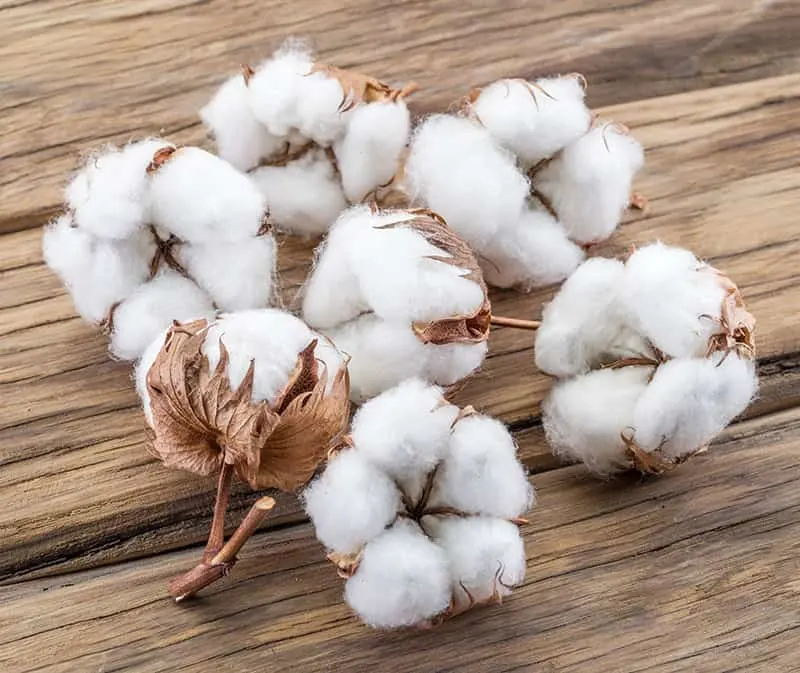
Tamarind (Mehendi)
Tamarind trees (mehendi trees) and myrtle trees are said to hold negative energies and attract evil spirits.
Traditionally, it was considered bad luck to build a home near a tamarind or myrtle tree.
While Western feng shui doesn’t say it’s bad luck to have a tamarind or myrtle tree in your yard, if you follow traditional Vastu practices, you might consider them bad luck.
One thing to remember is that having a tamarind or myrtle tree outside of your home can actually be protective, creating a protective energy barrier around your home, so you don’t necessarily have to cut them down.
Instead, live with the tree there for a while and see how it goes for you!
If you do believe that tamarind or myrtle trees are bad luck, however, you can certainly remove them.
Just replace them with a tree you like, instead!
How you feel about your home is the most important factor here.
So if they don’t bother you and you love your trees, leave them! You can always balance the energy in other ways.
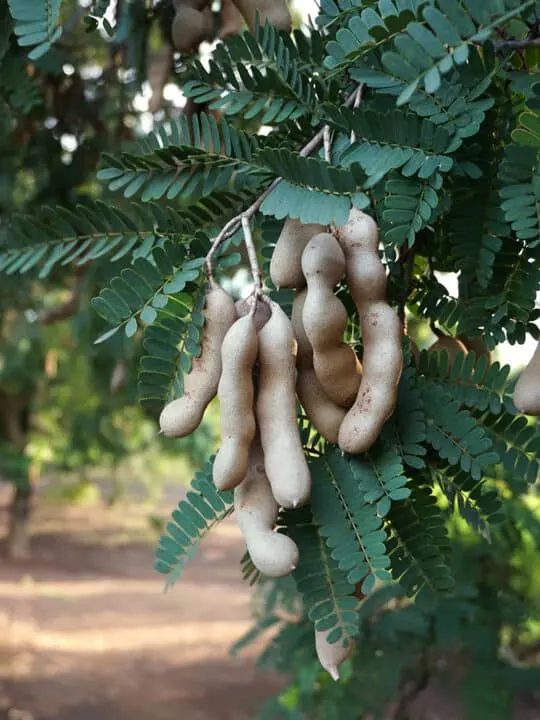
The gum arabic tree (also called thorn mimosa or Egyptian acacia) is considered bad luck in feng shui because of its thorns.
Gum arabic trees actually have medicinal properties, so they aren’t inherently bad luck.
But if you find yourself having a bad time with a babul tree in your yard, it is definitely better to remove it than it is to fight with its spiky energy.

Crown of Thorns Plant
The crown of thorns plant is both spiky AND poisonous, which is why it’s on the bad luck plant list.
While it’s easy to grow indoors because it’s a member of the euphorbia family, you should definitely be careful if you have animals or small children in your home who could come in contact with it.
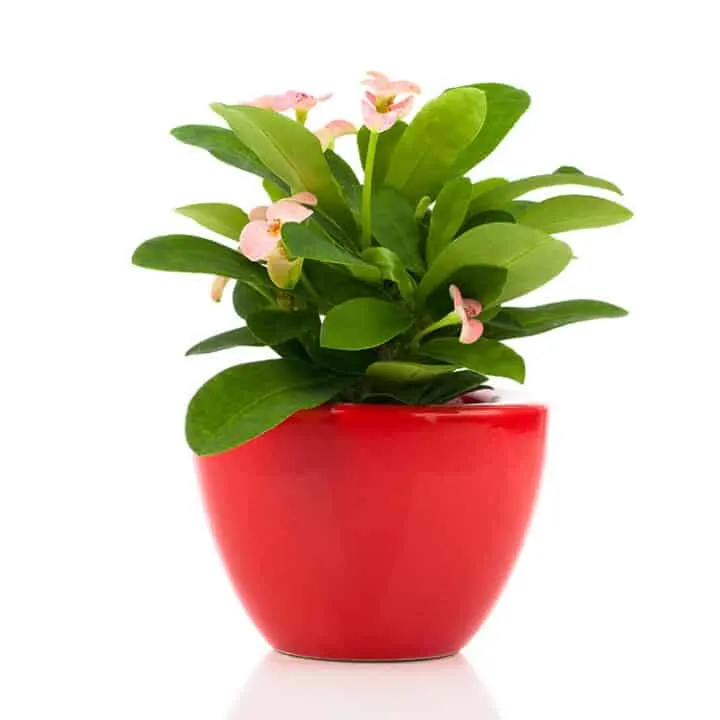
Bonsai Trees
Bonsai trees are considered an unlucky plant because of their stunted growth.
They aren’t allowed to thrive to their full potential, which can cause stagnant Chi inside of your home.
They are fine, however, if they are outside or on a covered porch or patio area.
When you are thinking about whether or not to keep a bonsai in your home, however, you should really consider YOUR feelings towards the bonsai.
Do you LOVE caring for it?
Is it an enjoyable hobby that makes you feel great when you care for your tree?
If so, the bonsai will not be an unlucky plant for you!
List of Bad Luck Plants in Feng Shui:
- spiky plants / plants with thorns
- dead or dying plants
- fake plants
- cotton plants
- tamarind (mehendi) and myrtle trees
- babul tree
- crown of thorns (euphorbia milii)
Plants with Thorns or Spikes
Thorns and spikes are called “poison arrows” in feng shui.
They have dangerous energy that points at you, piercing your energy, which drains the good Chi (life force energy.)
The most common houseplants with thorns or spines are cactus plants.
It’s fine to have a few cactus plants in your home, but if you have a home full of them, it’s generally better to keep most of them in your home’s fame and reputation area.
This is the only area of your home that’s ruled by the fire element (the element associated with cactus plants.)
Keeping one or two cactus plants in different areas will be fine, because fire is an important element.
But again, think about it as a bank account — too much fire energy can burn through the energy quickly!
If you LOVE cactus plants, don’t worry!
See this post for more info: cactus and feng shui, and also this post: the feng shui fire element.
Dead or Dying Plants
If you love plants, you’ve probably had a few plant hospitals in your home from time to time!
While it can be okay to have a few plants that you are nursing back to health, sometimes it is better for your home’s energy to replace the dying plants or remove them altogether.
Dead or dying plants carry sad, stale, and stagnant energy.
After all, they are no longer growing and replenishing the energy in your home.
In some cultures, it’s said that dead or dying plants have actually absorbed negative energy in your home, and that’s why they are no longer thriving!
Instead of keeping them, thank the plant for protecting your home and add it to the compost pile or throw it out.
Another way to think about dead or dying plants is – where can you put them in your home where you don’t mind having a little bit of bad luck?
See?
It’s much better to accept the life cycle of the plant and replace it than to let the negative energy accumulate!
Fake Plants
While fake plants aren’t always bad luck feng shui plants, they can get dusty and dirty.
This means they can hold stale, stagnant Chi.
If you have a lot of fake plants in your home, make sure that you clean and dust them often!
And replace them with new ones if they are faded or not in good condition.
Cotton Plants
The cotton bolls on live cotton plants are sharp and can slice or shred your skin.
And fake cotton plants can be hard to clean, so they get dust and grime trapped in their cotton tufts.
This is why cotton plants are considered bad luck in feng shui.
Cotton plants also tend to have negative connotations in modern society, which is also something to be mindful of when it comes to keeping them in your home.

Tamarind (Mehendi)
Tamarind trees (mehendi trees) and myrtle trees are said to hold negative energies and attract evil spirits.
Traditionally, it was considered bad luck to build a home near a tamarind or myrtle tree.
While Western feng shui doesn’t say it’s bad luck to have a tamarind or myrtle tree in your yard, if you follow traditional Vastu practices, you might consider them bad luck.
One thing to remember is that having a tamarind or myrtle tree outside of your home can actually be protective, creating a protective energy barrier around your home, so you don’t necessarily have to cut them down.
Instead, live with the tree there for a while and see how it goes for you!
If you do believe that tamarind or myrtle trees are bad luck, however, you can certainly remove them.
Just replace them with a tree you like, instead!
How you feel about your home is the most important factor here.
So if they don’t bother you and you love your trees, leave them! You can always balance the energy in other ways.

The gum arabic tree (also called thorn mimosa or Egyptian acacia) is considered bad luck in feng shui because of its thorns.
Gum arabic trees actually have medicinal properties, so they aren’t inherently bad luck.
But if you find yourself having a bad time with a babul tree in your yard, it is definitely better to remove it than it is to fight with its spiky energy.

Crown of Thorns Plant
The crown of thorns plant is both spiky AND poisonous, which is why it’s on the bad luck plant list.
While it’s easy to grow indoors because it’s a member of the euphorbia family, you should definitely be careful if you have animals or small children in your home who could come in contact with it.

Bonsai Trees
Bonsai trees are considered an unlucky plant because of their stunted growth.
They aren’t allowed to thrive to their full potential, which can cause stagnant Chi inside of your home.
They are fine, however, if they are outside or on a covered porch or patio area.
When you are thinking about whether or not to keep a bonsai in your home, however, you should really consider YOUR feelings towards the bonsai.
Do you LOVE caring for it?
Is it an enjoyable hobby that makes you feel great when you care for your tree?
If so, the bonsai will not be an unlucky plant for you!
Again, the most important thing to consider when it comes to whether a plant is unlucky or lucky is how YOU feel about it!
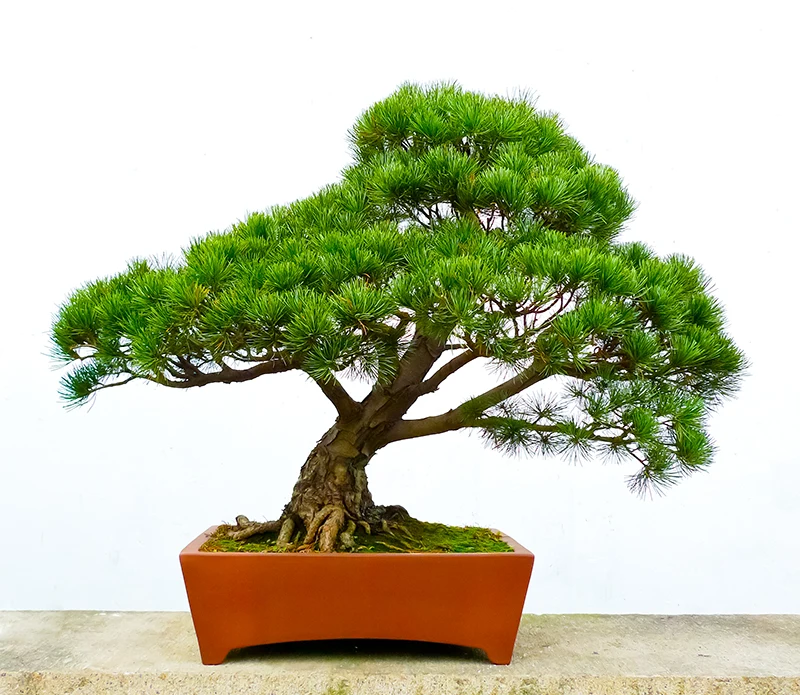
Feng Shui Bad Luck Plants: Q & A
Are fake plants bad luck?
Not necessarily! If your home isn’t the best environment for indoor plants, or if you happen to have a black thumb and kill all of your houseplants, keeping fake plants isn’t automatically bad luck.
Just make sure that you keep them clean and clear of dust because it can hold stagnant Chi.
Also, replace them if they are worn out or faded!
Is aloe vera plant bad feng shui?
No, aloe vera isn’t bad feng shui.
While aloe plants can be sharp, they also have a lot of medicinal properties.
Aloe plants are also succulents, which means they hold wealth energy!
Is the rose plant good for feng shui?
While roses are spiky plants, they also have flowers and are considered good luck in feng shui.
They can be great for the front of your home to not only protect your home from negative energy, but also attract good fortune and positive Chi!
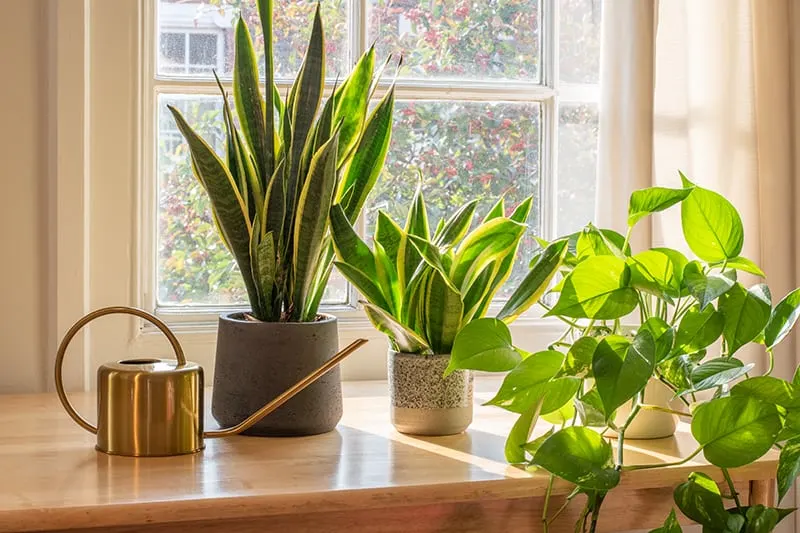
Snake plants do have sharp, pointed edges and resemble swords, so they can have piercing Chi.
They are also called “mother-in-law’s tongue,” which also gives them a negative reputation.
Snake plants also have strong upward growth, which can activate the wood element in your home, so they aren’t considered unlucky in feng shui.
Just be mindful of all of the energy in your home and try to keep it balanced and clear!
In conclusion, while there are definitely some bad luck plants in feng shui, NOTHING will automatically bring you bad luck.
In fact, what one person considers bad luck, another person might actually consider to be good luck!
Instead of worrying about whether something is bad luck or good luck, think more in terms of the overall energy balance in your home.
You can use unlucky plants to protect and enhance the energy in your home instead of feeling like they are going to immediately bring you bad luck!
You can also bring in more lucky plants to balance the energy so that everything evens out!
After all, feng shui helps you create your OWN luck, so use it to your advantage and you’ll never feel unlucky again!
Now that you know all about bad luck plants in feng shui, you might also want to know:
- feng shui plants for wealth (8 plants that attract money and abundance!)
- Feng Shui Plants in Bedroom: 8 Do’s and Don’ts for Good Feng Shui
- feng shui plants for good health (8 plants for health, healing, & growth!)
- 18 feng shui lucky plants that will actually bring good fortune in 2022
- Cactus Feng Shui: Is cactus bad luck in feng shui?
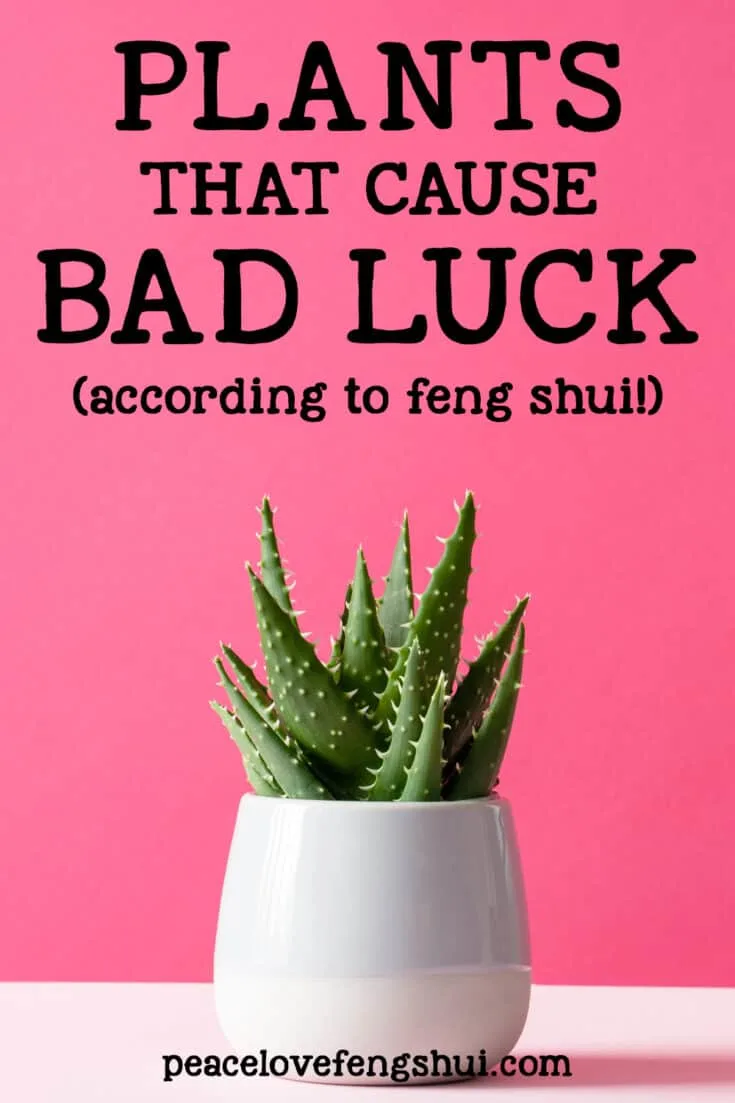
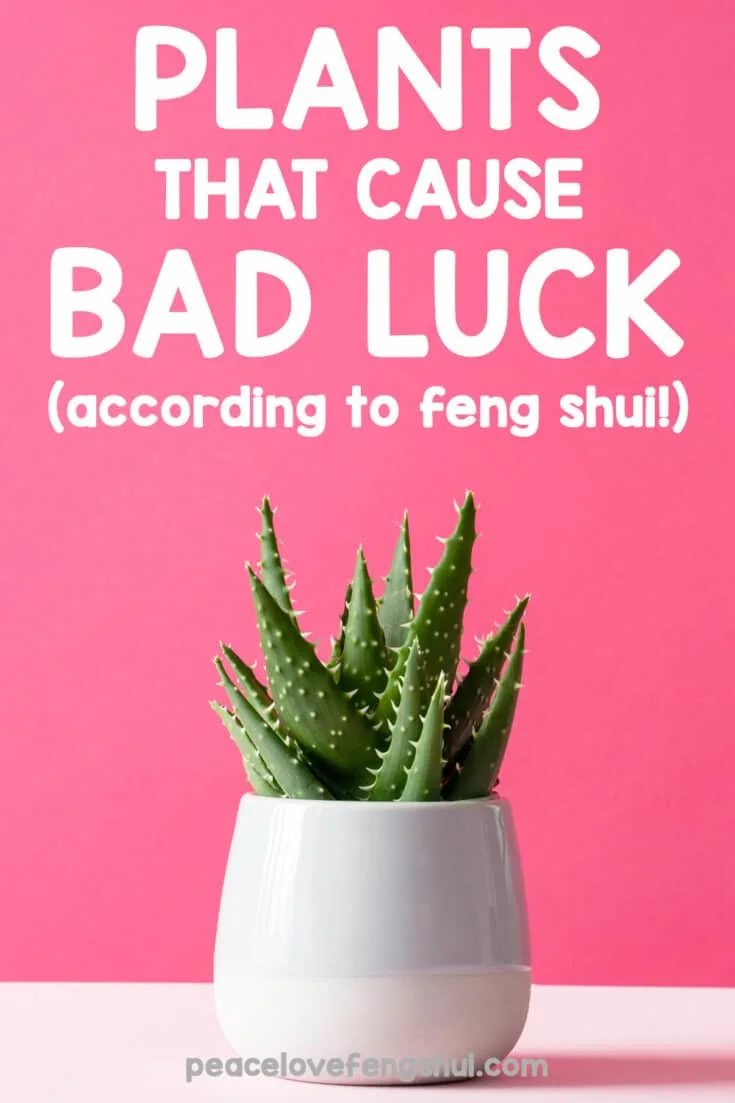
Comments
Post a Comment